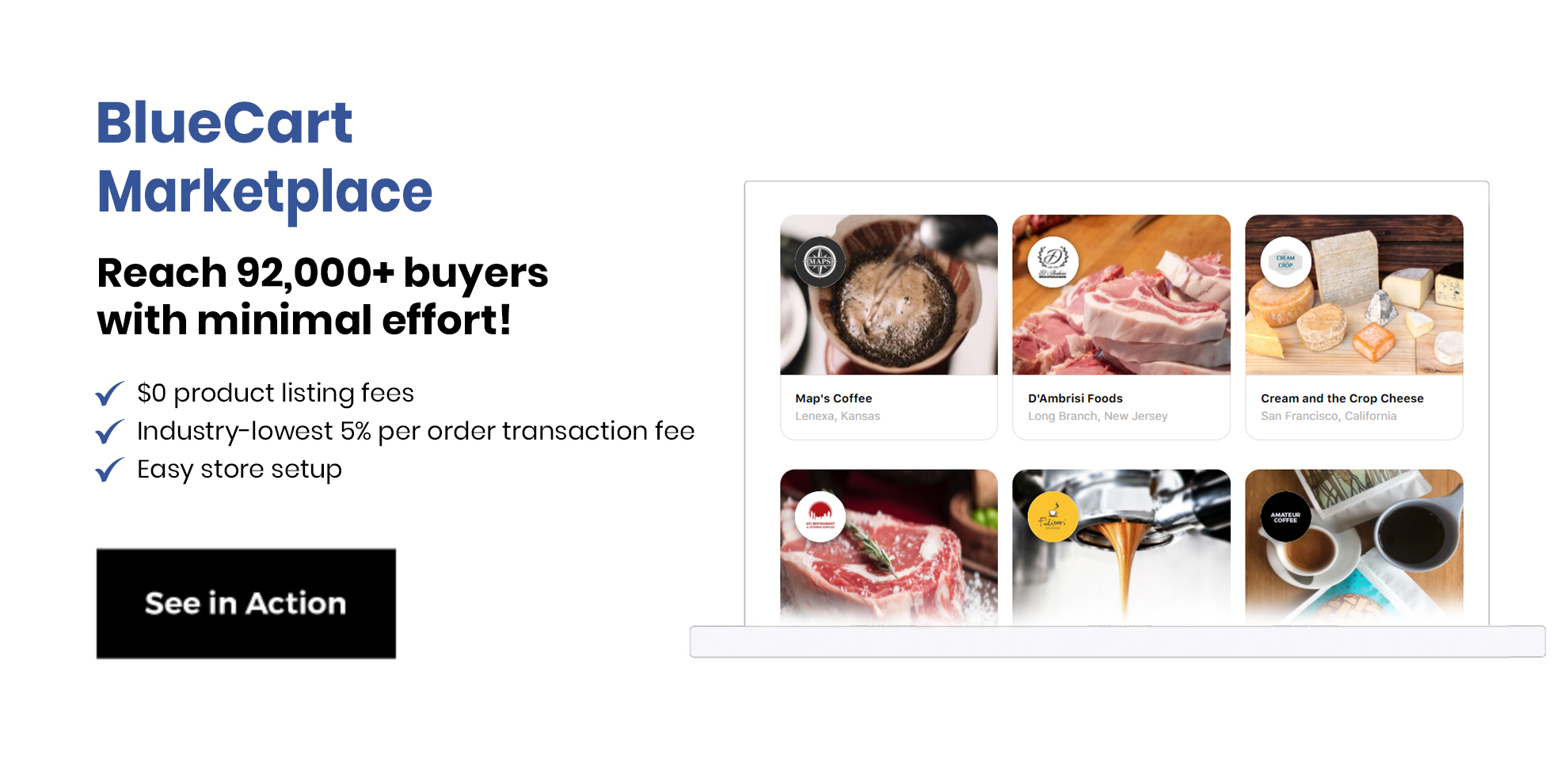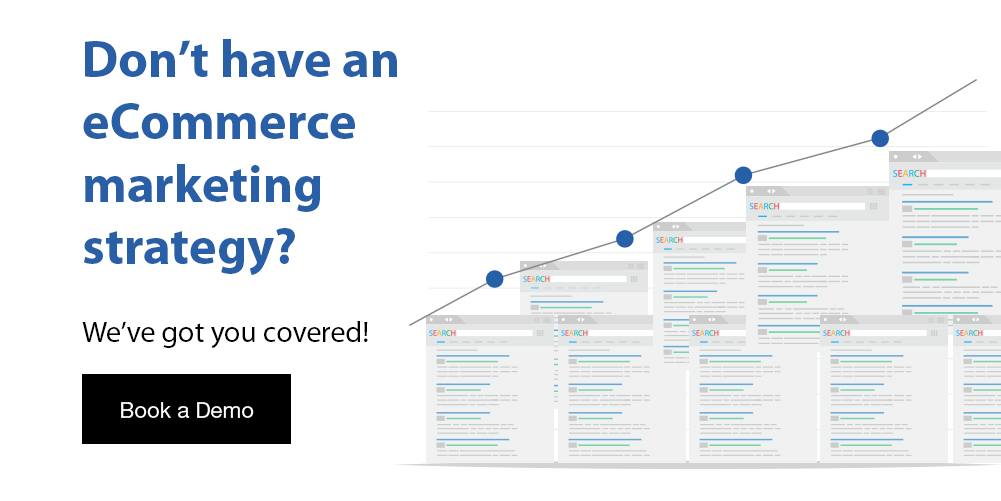Are you aware that you can use your own branded mobile app to provide the same brick and mortar shopping experience online without losing your identity or control? Mobile commerce makes this possible while delivering on the perfect omnichannel customer experience.
Key Takeaway: There are a variety of mobile commerce solutions available for online ordering, payment processing, and delivery management. mCommerce allows you to display products with stock availability, accept orders, integrate mobile payment gateways, and schedule delivery with terms and conditions that you set.
By using mobile devices instead of desktop computers, customers can access online wholesale marketplaces and multichannel order management platforms through m-commerce. So, what is mCommerce and how does it work? Let’s find out!

What is M-Commerce?
M-commerce, or mobile commerce, refers to the buying and selling of goods and services through mobile devices such as smartphones and tablets. It includes a wide range of activities, including mobile banking, mobile shopping, mobile payments, and more.
With the widespread adoption of mobile devices and the increasing use of the internet for commerce, m-commerce has become an important part of the eCommerce industry. It allows consumers to shop and make purchases anytime, anywhere, and provides businesses with new opportunities to reach and engage with customers.
Here are some statistics and facts about m-commerce:
- In 2020, the global m-commerce market was worth an estimated $3.9 trillion, and it is expected to reach $6.5 trillion by 2023.
- M-commerce accounts for an increasing share of e-commerce sales, with mobile devices accounting for more than half of all online traffic in some countries.
- In the United States, m-commerce accounted for nearly 40% of all e-commerce sales in 2020.
- Asia is the largest market for m-commerce, with China and India leading the way. In 2020, m-commerce sales in China totaled $2.1 trillion, making it the largest m-commerce market in the world.
- Mobile payments, such as those made through apps like Apple Pay and Google Pay, are an important part of the m-commerce market. In 2020, the global mobile payment market was worth an estimated $4.4 trillion.
- The popularity of m-commerce is expected to continue to grow in the coming years, driven by the increasing use of mobile devices, the expansion of mobile internet access, and the growing adoption of mobile payments.
mCommerce vs eCommerce
M-commerce and eCommerce are similar in that they both involve the buying and selling of goods and services through the internet. However, there are some key differences between the two:
- Device: M-commerce refers specifically to the buying and selling of goods and services through mobile devices such as smartphones and tablets. eCommerce, on the other hand, refers to the buying and selling of goods and services through the internet, regardless of the device being used.
- Convenience: M-commerce is often more convenient for customers, as it allows them to shop and make purchases anytime, anywhere, using their mobile devices. eCommerce, while also convenient, may require the use of a desktop or laptop computer, which may not be as readily available as a mobile device.
- Payment options: M-commerce often offers more b2b payment options, including mobile payments through apps like Apple Pay and Google Pay. eCommerce may offer fewer payment options, such as credit card payments or PayPal.
- Personalization: M-commerce can offer a more personalized shopping experience, as it can make use of data collected from the customer's mobile device, such as location and browsing history. eCommerce may not have access to this same level of data.
How Mobile Commerce Works in 6 Steps
The process of making a purchase through m-commerce is similar to making a purchase through eCommerce, but it is specifically designed for mobile devices.
Here's how it works:
- The customer accesses an online store or marketplace through their mobile device. This can be done through a web browser or through a dedicated app.
- The customer browses the store and selects the products they wish to purchase.
- The customer adds the products to their shopping cart and proceeds to checkout.
- The customer enters their payment and shipping information and confirms the order.
- The payment is processed and the order is placed. The customer is typically notified of the order confirmation and expected delivery date.
- The seller fulfills the order and ships the products to the customer.

Benefits of Mobile Commerce for Wholesale Distributors
Mobile commerce can be a powerful tool for wholesale distribution companies looking to grow their businesses and reach new customers in the digital age.
M-commerce can provide a number of benefits for wholesalers, including:
- Increased reach: M-commerce allows wholesalers to reach a wider audience, including customers who may not be able to visit their physical stores or who prefer to shop online.
- Improved customer experience: By offering a mobile-friendly website and seamless checkout process, wholesalers can improve the shopping experience for their customers, which can lead to increased customer loyalty and sales.
- Increased efficiency: M-commerce can streamline the ordering process for both wholesalers and their customers, reducing the time and effort required to complete transactions. This can lead to increased efficiency and cost savings.
- Enhanced data collection and analysis: M-commerce can provide wholesalers with access to valuable data on customer behavior and preferences, which can be used to inform business decisions and improve marketing efforts.
- New revenue streams: Wholesalers can use m-commerce to offer new products and services, such as subscriptions or personalized product recommendations, which can help to generate additional revenue.
5 Tips to Getting Started With Mobile Commerce
If you are a business looking to get started with m-commerce, here are some steps you can take:
- Identify your Target Market
Consider who your customers are and how they use their mobile devices. This will help you understand their needs and preferences, and tailor your m-commerce strategy accordingly.
- Develop a Mobile-Friendly Website
Make sure your website is optimized for mobile devices. This means that it should be easy to navigate and load quickly on a variety of devices and browsers.
- Offer a Seamless Checkout Process
Make it easy for customers to make purchases on your site by streamlining the checkout process. This may involve offering various payment options, such as mobile payments, and minimizing the number of steps required to complete a purchase.
- Promote your mCommerce Offerings
Use various eCommerce marketing channels, such as social media, eCommerce email marketing, and targeted advertising, to promote your m-commerce offerings to potential customers.
- Monitor and Analyze Customer Behavior
Use analytics tools to track customer behavior on your mobile site, including what products they are viewing and purchasing, and how they are interacting with your site. This will help you identify any issues or areas for improvement and make necessary adjustments.
Want to know how AI in eCommerce can help you create a more efficient sales process? Read this blog!
The Future of Mobile Commerce For Businesses
The future of m-commerce looks bright, with analysts predicting continued growth in the coming years.
Here are some trends that are likely to shape the future of m-commerce:
- Increased adoption of mobile payments: The use of mobile payments, such as those made through apps like Apple Pay and Google Pay, is expected to continue to grow as more consumers adopt mobile devices and as merchants increasingly accept these payment methods.
- Greater use of artificial intelligence and machine learning: M-commerce businesses are expected to increasingly make use of artificial intelligence and machine learning to improve the shopping experience for customers and optimize their operations. This could include personalized product recommendations, real-time price comparisons, and more.
- Expansion of the Internet of Things: The Internet of Things (IoT) refers to the network of connected devices that can exchange data and interact with one another. The expansion of the IoT is expected to create new opportunities for m-commerce businesses, such as the ability to offer new products and services, and to gather and analyze data from a wide range of sources.
- Greater integration of m-commerce with other channels: M-commerce is expected to become more integrated with other channels, such as social media and messaging apps, allowing businesses to reach and engage with customers in new ways.

Frequently Asked Questions About MCommerce
Here are some frequently asked questions about m-commerce:
What is mCommerce?
M-commerce refers to the buying and selling of goods and services through mobile devices such as smartphones and tablets. It includes a wide range of activities, including mobile shopping, mobile payments, and mobile banking.
How Does mCommerce Work?
M-commerce works by allowing customers to access online stores or marketplaces through their mobile devices and make purchases using various payment options. The order is then processed and fulfilled by the seller, and the products are shipped to the customer.
What are the Benefits of mCommerce for Businesses?
M-commerce can provide businesses with increased reach, improved customer experience, increased efficiency, enhanced data collection and analysis, and new revenue streams.
What are the Benefits of mCommerce for Customers?
M-commerce can provide customers with increased convenience, more payment options, and a more personalized shopping experience.
How is mCommerce Different From eCommerce?
M-commerce refers specifically to the buying and selling of goods and services through mobile devices, while e-commerce refers to the buying and selling of goods and services through the internet, regardless of the device being used. M-commerce may offer more payment options and a more personalized shopping experience, but e-commerce may have a wider selection of products and a more established customer base.